The Art of Looking Up
Learning about PERSPECTIVE while chaperoning a 4th grade field trip to the Museum of Fine Arts
As we enter National Poetry Month here in the United States, I will be writing a bit more about the struggles of juggling the life of being a poet and a mother in a family with complex needs. It is one of the reasons why I went from publishing once a week to 2-3 times a month.
As I make decisions about my future I’ve had to ask myself:
What price am I willing to pay for the creative life?
I think of the Gambler when he says,
You've got to know when to hold 'em,
know when to fold 'em,
Know when to walk away,
know when to run.
Writing poetry has changed the way I think about language and culture, how I use words, and how I relate to other people. I am no longer someone who writes poems. I am, despite the uneasiness of acknowledging it, a poet. It is like how having children made me into a mother. Some things in life are utterly transformative. In both cases, I feel being a poet and a mother has changed me for the better. However, I have a very ordered way of thinking. I have shared my very simple morning prayer1 in the past, but for those who are new, it goes like this:
O Lord,
Please make me a better Catholic, wife, mother, friend, and writer. The writing comes fifth, but it is still something I care deeply about. My goal is to make my writing good enough for you, the reader. But I have a body that needs sleep. I have family members who need my labor and love. And I would love keep the friends that I have, and that takes some type of investment as well.
From January to March I’ve had the opportunity to meet other poets who have families, many of whom have children roughly in the same range as mine (aged 22 to 9). These mothers and fathers have found ways of creatively navigating the limitations of their resources. Having more resources definitely helps, but no one I spoke to felt like they lived in abundance. I’ve needed to hear a variety of people’s perspectives.
Questions for my creative friends:
Do you write and have a family and a job ourside the house? How do you make time for everything? What have you had to sacrifice?
Do you have a job that allows you enough time to pursue a creative life?
Have you ever had to put your art on the back burner and wait it out for years? How did it go? Were you able to get back to your artistic life?
Have you ever lost the ability to create like you were able to when you were younger?
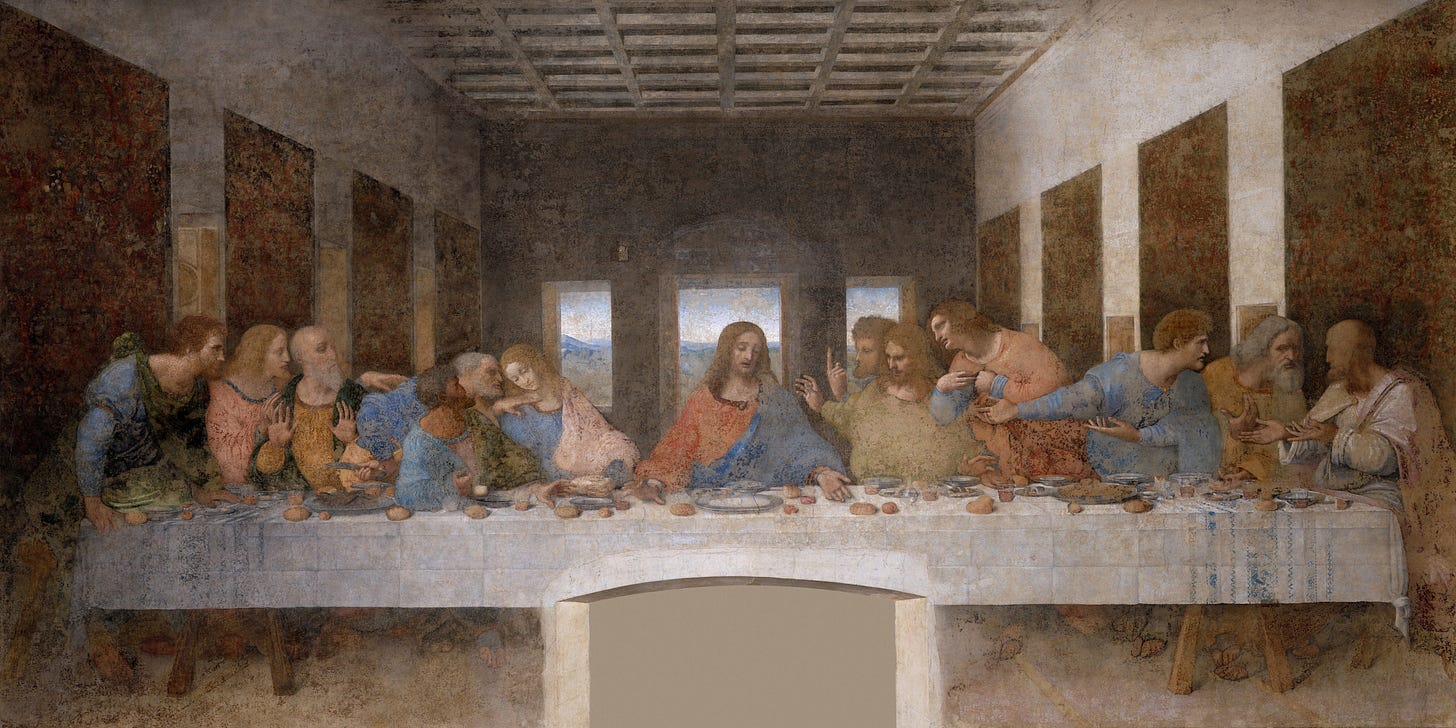
perspective (n.)
late 14c., perspectif, "the science of optics," from Old French perspective and directly from Medieval Latin perspectiva ars "science of optics," from fem. of perspectivus "of sight, optical" from Latin perspectus "clearly perceived," past participle of perspicere "inspect, look through, look closely at," from per "through" (from PIE root *per- (1) "forward," hence "through") + specere "look at" (from PIE root *spek- "to observe"). The English word is also attested from early 15c. as an adjective, "pertaining to the science of optics."2
My main experience of the word perspective comes from studying art, such as when I was in high school and learned of Da Vinci’s use of one-point perspective in The Last Supper. For an artist, perspective is the skill of creating a three-dimensional effect on a two-dimensional surface. Some call it an optical illusion. I prefer to think of it as an optical translation from one dimension to another.
Speaking of art, I recently had the opportunity to chaperone a field trip to the Museum of Fine Arts in Boston with my daughter’s 4th grader class. I boarded a bus full of 9 and 10-year-olds and led a group of 4 kids on a quick jaunt around a very large museum. My crew was loquacious and well-behaved — but very excitable. One of my boys yelled,
“Look! It’s Jack Black dressed like George Washington!”

Not only did the children see things in funny and interesting ways, but they saw more than I did because they seemed to look everywhere except straight ahead. A lot of times they were looking up.
The children had no trouble finding a scavenger hunt piece installed on the ceiling on the second floor. It was a work called Untitled by Tara Donovan, and it is made of nothing more than styrofoam cups and hot glue. It looks round and bubbly — a very whimsical piece made on a fairly large scale.
(I didn’t think to take a photo when I was there, but you can see it at this link. I will try to find a picture to put into Substack at a later time.)
That evening I asked my daughter what artworks she liked the most, and she said the ceiling piece by Donovan and the Picassos.
“Why Picasso?” I asked. I remembered that she stood by a particular piece for a long time. It was Portrait of a Woman.
“He was really good at making paintings of people that didn’t look like people.”
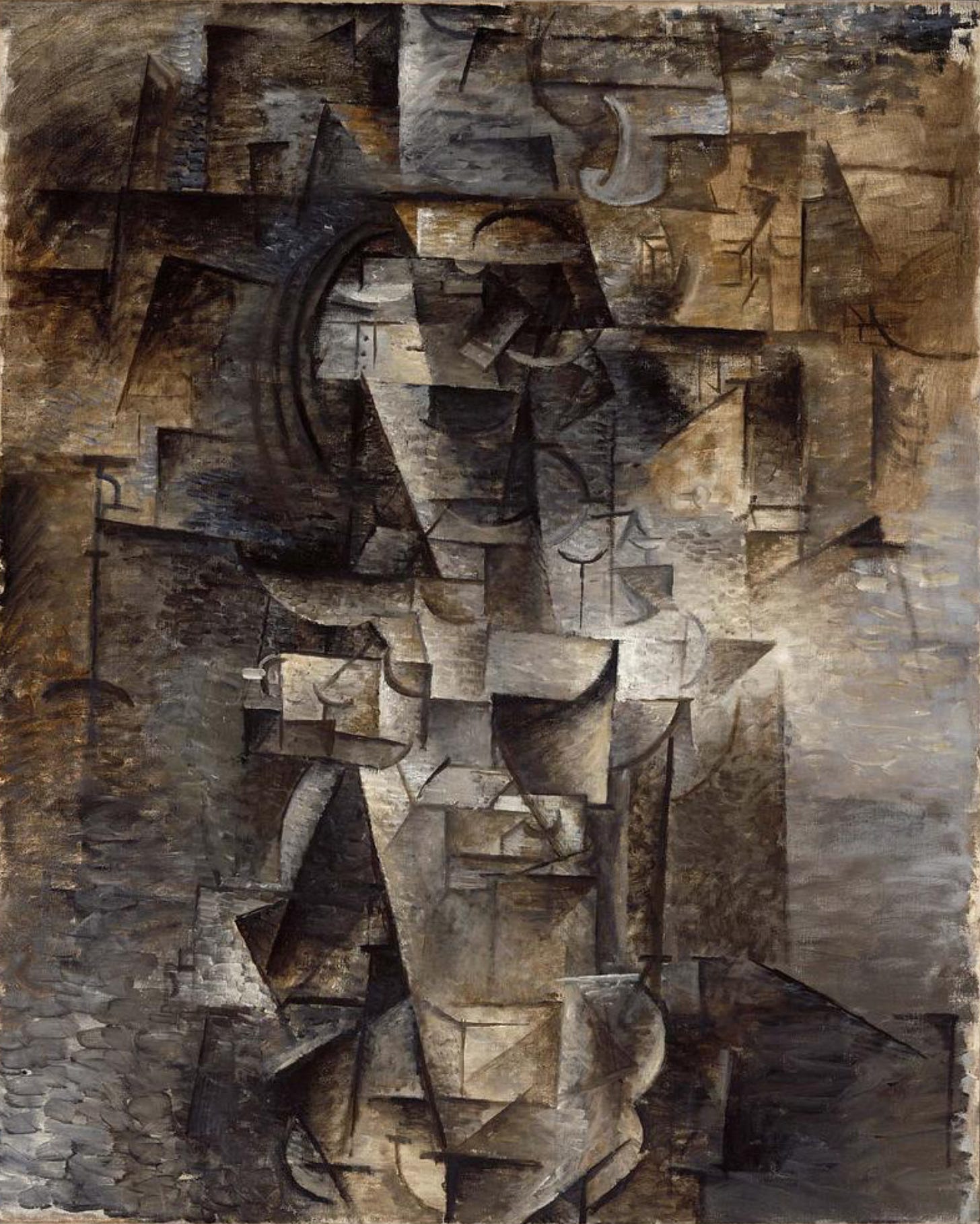
And for the rest of the week, I saw things differently.
The day after the field trip I went with my 19-year-old son to a potential vocational placement, and as I waited for him at a café I looked up…
Then a few days later, in church I saw this…
Then I remembered the first day of spring had just occurred and that I would soon be greeted by flowering branches…

And I realized that even rainy days offer another way of looking up.
This type of seeing asks us to do two things:
Stop,
Pay attention.
As Simone Weil wrote,
Attention, taken to its highest degree, is the same thing as prayer. It presupposes faith and love. Absolutely unmixed attention is prayer.
Over the past two weeks I have found that looking anywhere with close attention is a way of “looking up” — in another sense. Looking at a landscape, in a painting or on a hike, is an opportunity to glimpse heaven.
Being around other people and asking them what they see becomes a way of giving your imagination another set of eyes. Talking to people — without judgement, with an open mind and heart — can be as transformative as any art. Art comes from the Latin Ars, which means skill or craft. I have learned that there is art to looking.
Sometimes the master artist is the 9-year-old looking at a Picasso for the first time. I realize I am only an apprentice.
Thank you for reading. It is a blessing to have you here.
I welcome any feedback that could make this newsletter better.
Please comment or send me a message if you have any ideas.
I also have this beautiful prayer of humility by Cardinal Merry del Val posted beside my desk.
https://www.etymonline.com/word/perspective

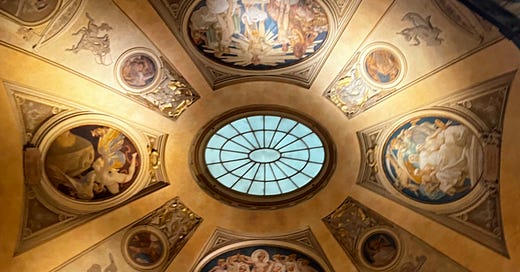


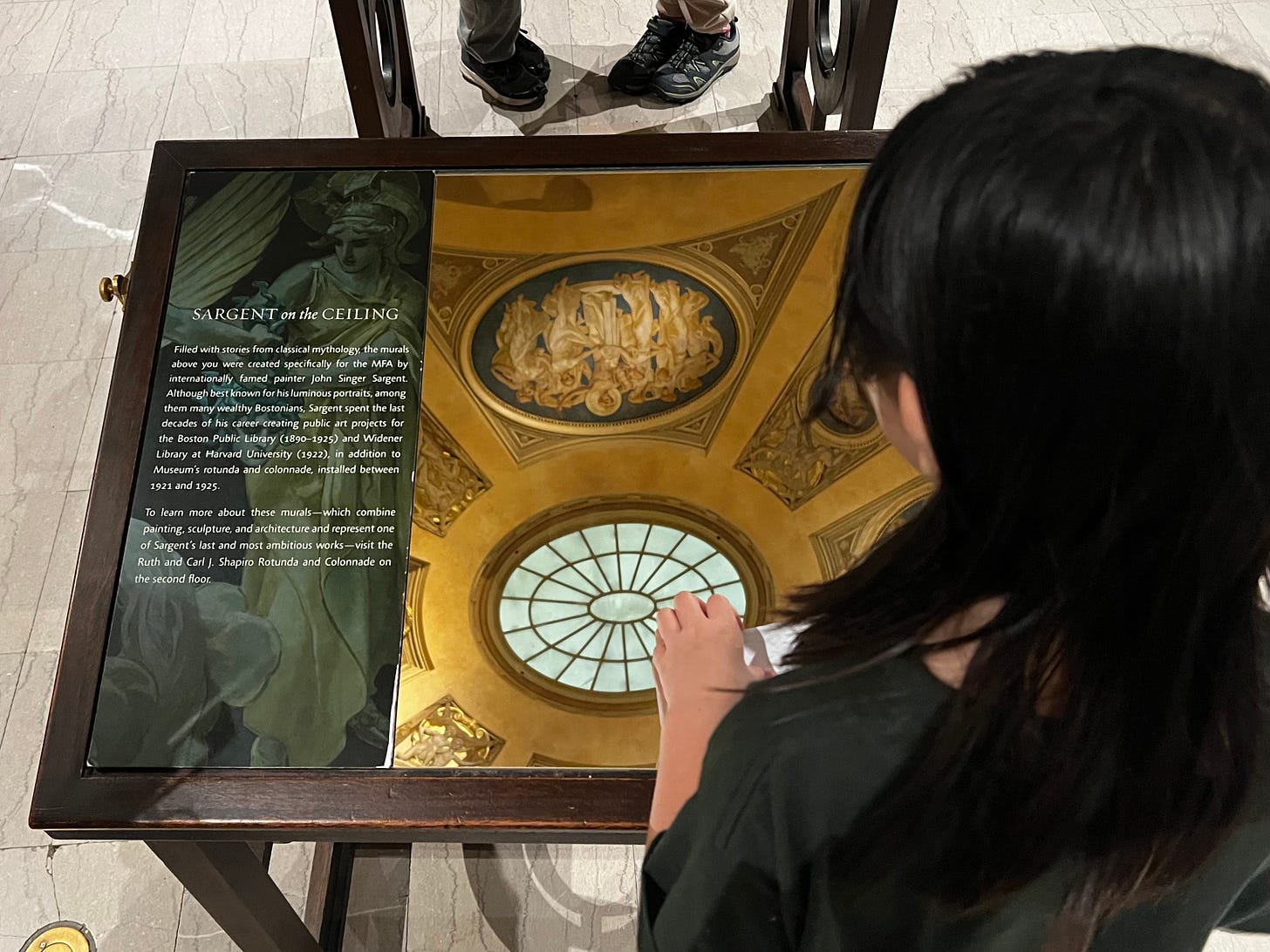


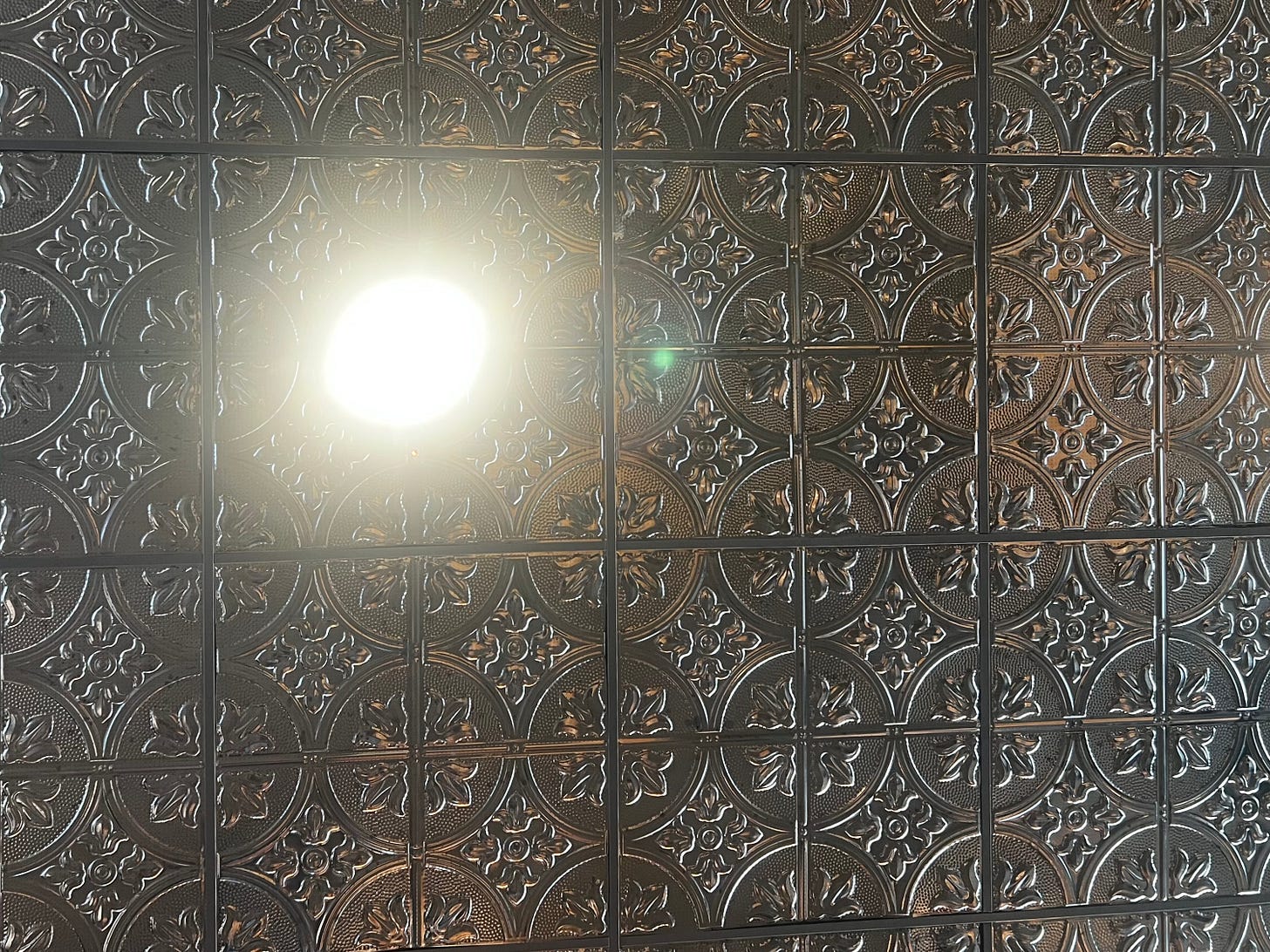
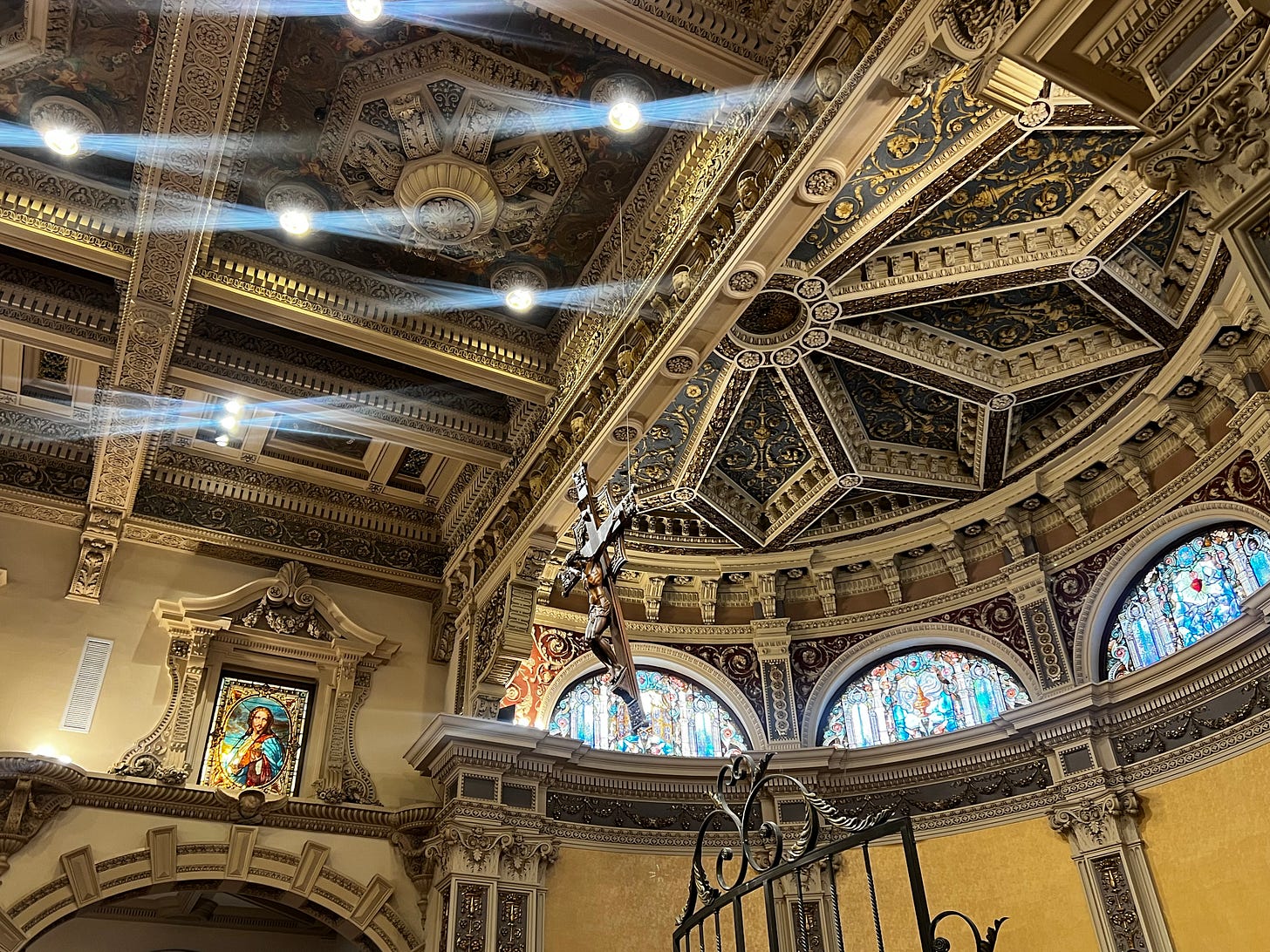
A beautiful reminder!!
Tara Donovan's Untitled is one of my favorites too. It's so light and fluffy and yet made of such simple materials. When you describe it as a bunch of cups glued together it doesn't sound appealing, but the mass and volume and grace of it belies the stuff it's constructed from. And that challenges me as a viewer but also delights me.
Finding time to write while parenting and teaching has often ben hard. And there have definitely been seasons when I didn't write much. But I think I always wrote *some*, even if it was just a few lines scribbled in a notebook or on an envelope. Because being a poet is only partly about putting words on paper. Being a poet is about noticing the world and loving it. And it's about noticing words and loving them. And it's about being driven to try to make words capture what it is I notice and love about the world.
And I love how you've expressed that in terms of looking up. Which is a metaphor. And you've given it shape and form:
Look up! And see clouds
of cups, windows in
the ceiling, art in
the air! Look up
at the flowers that make
a roof and a roof
adorned with flowers. See
saints shining, crosses
floating, hearts
glowing. Then look
down and see you
are looking up after all
every puddle a mirror
every mirror a world holding
sky and trees etched
in transitory water
on an asphalt frame.